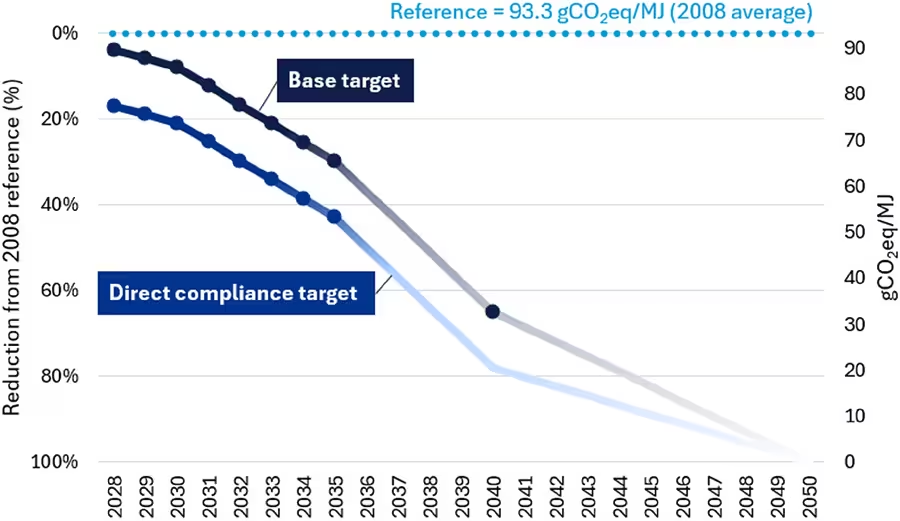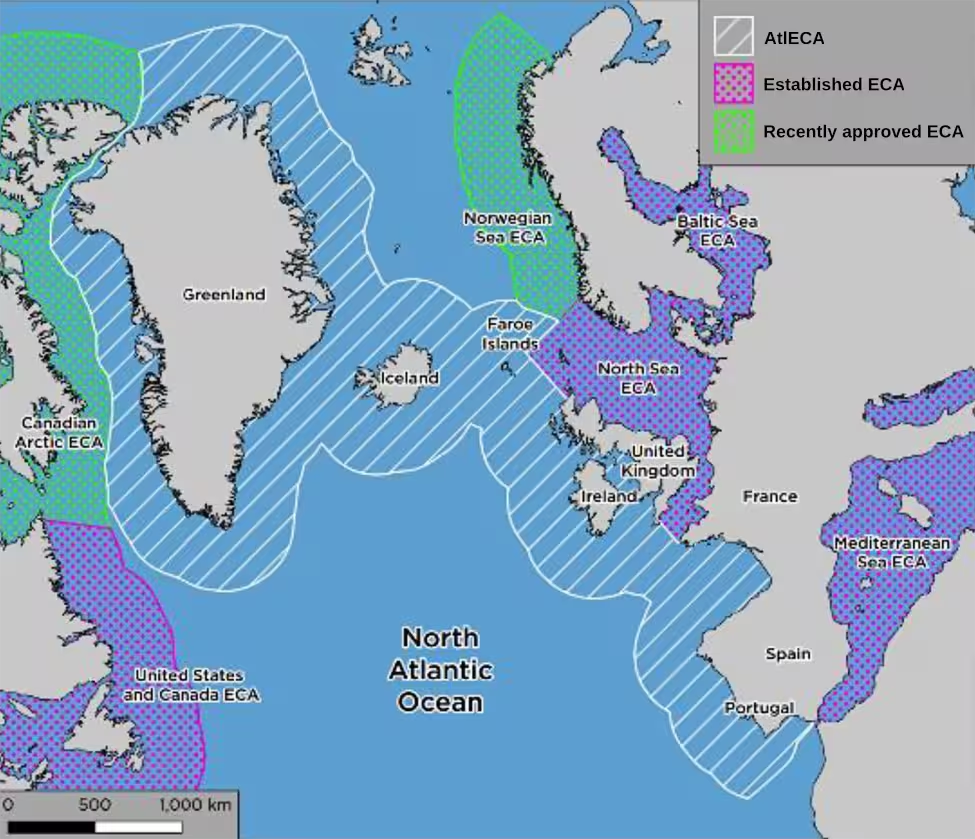IMO MEPC approves draft mid-term GHG measures
16 April 2025
The International Maritime Organization’s (IMO) Marine Environment Protection Committee (MEPC) held its 83rd session (MEPC 83) in London from 7 to 11 April 2025.
Please log in to view the full version of this article (subscription required).
The key outcomes related to ship emission control were:
- Agreement on draft mid-term GHG measures based on fuel GHG intensity and a pricing mechanism.
- Agreement on draft amendments that would designate the North-East Atlantic Ocean as ECA.
- Adoption of amendments to the MARPOL Annex VI and the NOx Technical Code.
GHG Measures. MEPC 83 approved draft mid-term GHG measures to address the 2023 IMO GHG Strategy. These measures would regulate the GHG intensity of fuel used by ships with economic measures and establish an IMO Net Zero Fund. Assuming the adoption of the draft amendments at an extraordinary session of MEPC in October 2025, the amendments will enter into force March 2027 at the earliest.
The mid-term measures would apply to all ships above 5,000 GT with a few exceptions. The GHG fuel intensity (GFI) is the well-to-wake GHG emissions per unit of energy (gCO2eq/MJ) used on board a ship and includes electricity delivered to the ship, wind propulsion and solar power.
Two tiers of requirements are set on the annual attained GFI for a ship: a Base target and a more stringent Direct Compliance target. Each ship is required to meet the Direct Compliance target. The regulations include annual GFI reduction factors to 2035, Figure 1. The Base target for 2040 is set to 65%.

(Source: DNV)
If a ship has a GFI lower than the Direct Compliance target, it will receive Surplus Units (SUs). Conversely, if a ship has a GFI above the Direct Compliance target, it accrues two tiers of compliance deficits:
- For a GFI between the Base and the Direct Compliance targets, a ship generates a Tier 1 compliance deficit.
- For a GFI above the Base target, a ship generates both a Tier 1 compliance deficit (for the emissions between the Base and the Direct Compliance targets) and a Tier 2 compliance deficit (for the emissions above the Base target).
A ship with a compliance surplus can transfer SUs to ships with a compliance deficit or it can bank the units for later use within the two subsequent calendar years.
A ship can balance its Tier 2 compliance deficit with SUs from other ships, or it can buy Remedial Units (RUs) from the IMO Net-Zero Fund. A Tier 1 compliance deficit can only be compensated by Tier 1 RUs. The initial RU prices are set as follows:
- Tier 1 RU: US$100 per tonne of CO2eq
- Tier 2 RU: US$380 per tonne of CO2eq
The IMO Net-Zero Fund will disburse revenue as rewards for using Zero or Near-Zero GHG emission technologies (ZNZs) and for supporting the energy transition of developing countries, in particular least developed countries (LDCs) and small islands developing States (SIDS).
For a ship burning very low sulfur fuel oil (VLSFO, 0.5% sulfur max.) typically having a GFI of 91 gCO2/MJ, one estimate puts the compliance cost at about $76/t of fuel in 2028 and rising to $653/t of fuel in 2035. The year-to-date average cost of VLSFO is currently about $605/t.
Other GHG measures discussed at MEPC 83 included the EEXI (Energy Efficiency Existing Ship Index) and CII (Carbon Intensity Indicator) rating regulations that were introduced by IMO as short-term measures. New CII reduction factors for 2027-2030 were set with the CII reduction factors increasing in severity from the previously set 11% in 2026 to 21.5% in 2030.
North-East Atlantic Ocean as ECA. Draft amendments to MARPOL Annex VI were approved that would designate the North-East Atlantic Ocean as an Emission Control Area (ECA), Figure 2. If the draft amendments are adopted at the extraordinary session of MEPC in October 2025 with an application date of March 2027, the sulfur content in fuel oil used for ships operating in North-East Atlantic ECA would be limited to 0.10% starting March 2028 the earliest. The NOx Tier III emission limit would apply to ships operating in this ECA if the building contract is in place on or after 1 January 2027, the keel is laid on or after 1 July 2027 or they are delivered on or after 1 January 2031.

(Source: Class NK)
NOx Technical Code Amendments. Amendments to the NOx Technical Code 2008 were adopted that include:
- onboard NOx certification procedures for marine diesel engines subject to substantial modifications (such as for GHG reduction) or being certified to a Tier to which the engine was not certified at the time of its installation. Entry into force is September 1, 2026.
- procedures for demonstrating compliance of “off-cycle” NOx emissions and NOx regulations for marine diesel engines with multiple engine operational profiles. These amendments may lead to an increased number of load points for NOx emission tests. Entry into force is March 1, 2027 with application to new parent engines to which EIAPP Certificates are issued on or after 1 January 2028. Application to engines covered by a EIAPP Certificate issued prior to January 1, 2028 is January 1, 2030.
Source: IMO